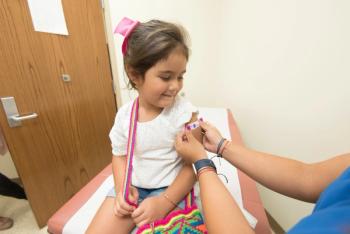
Which States Saw Greatest COVID-19 Mortality?
A new study reveals how US states fared, and some of the underlying reasons why the pandemic has played out in vastly different ways.
A new study is reporting there was a four-fold variation in COVID-19 mortality rates across US states between January 2020 and July 2022. The states with the lowest mortality rates were Hawaii, New Hampshire, and Maine; conversely, the highest mortality rates were in Arizona, Washington, DC, and New Mexico. Specifically, when adjusted for age and comorbidities, Hawaii and New Hampshire had standardized mortality rates that were 147 and 215 deaths per 100,000, respectively. Arizona and Washington, DC has mortality rates of 581 and 526 deaths per 100,000, respectively.
The study was published in
“If all states had the cumulative death rate of New Hampshire, it is estimated that there would have been 504 144 (332 895–590 902) fewer COVID-19 deaths in the USA,” the authors wrote. “Without these additional deaths, the USA would have had a lower cumulative COVID-19 death rate than 12 high-income nations, instead of having the highest rate among all high-income nations.”
"Even after accounting for age and underlying illnesses, we observed a nearly four-fold difference in COVID-19 death rates across states, suggesting that the country as a whole could have performed much better,” said co-lead author Emma Castro, a researcher at the Institute of Health Metrics and Evaluation (IHME). “Examining how specific states fared and identifying commonalities of states that performed well offers important insights about how we can and must respond better to this and future pandemic threats."
The study’s investigators utilized public databases, including COVID-19 infection and mortality estimates from the IHME COVID-19 database; Bureau of Economic Analysis data on state gross domestic product (GDP); Federal Reserve economic data on employment rates; National Center for Education Statistics data on student standardized test scores; and US Census Bureau data on race and ethnicity by state. The investigators standardized infection rates for population density and death rates for age and the prevalence of major comorbidities to facilitate comparison of states' successes in mitigating the effects of COVID-19.
Results of this analysis were used to answer five-key policy questions that have emerged during the pandemic around wide state-by-state variations in COVID-outcomes: 1) the role of social, racial, and economic inequities; 2) whether states with greater health care and public health capacity performed better; 3) the influence of politics on the results; 4) whether states that imposed more policy mandates and sustained them longer did better; and 5) whether there were trade-offs between a state having fewer cumulative SARS-CoV-2 infections and total COVID-19 deaths and better economic and educational outcomes.
The researchers stressed that states with the lowest standardized COVID-19 death rates came from different geographies and partisan influence. And the same is true for the states with the highest standardized COVID-19 death rates.
The study is the first time researchers have comprehensively examined the driving forces behind wide variations in SARS-CoV-2 infections and COVID-19 deaths across all states over a lengthy period and adjusted for factors outside policymakers' immediate control (e.g., age, population density, key comorbidities).
Continuous Policy and Program Investment
The authors noted that understanding the environment in which infections and deaths were disproportionately clustered in this pandemic will be crucial to future clinical and policy interventions. Investment in policies and programs will help. For example, they pointed to paid family and sick leave and expanded Medicaid and insurance coverage as policies that would help people with lower incomes get vaccinated and obtain effective treatment.
In addition, states should continue to invest in community-based organizations, such as local clinics or faith-based institutions, to continue to engage in ongoing public health promotion, build relationships with constituents, and encourage vaccine uptake generally among partisan and marginalized groups.
Newsletter
Stay ahead of emerging infectious disease threats with expert insights and breaking research. Subscribe now to get updates delivered straight to your inbox.




























































































































































































































































































